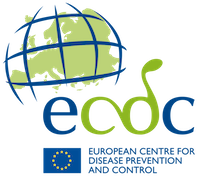Epidemiological update, 14 January 2025: Mpox due to monkeypox virus clade I
In recent months there have been reports of monkeypox virus clade I cases in different EU/EEA countries following the geographic expansion of monkeypox virus clade I since mid-2024. This epidemiological update summarises these recent events.
ECDC published a Rapid Risk Assessment for the EU/EEA of the mpox epidemic caused by monkeypox virus clade I in affected African countries [1] on 16 August 2024 and the levels of risk assessed from that report remain unchanged; the overall risk for the EU/EEA general population remains low.
Recommendations [2] for public health authorities in EU/EEA countries particularly relate to:
- Information for travellers to areas with ongoing MPXV transmission;
- Diagnosis and isolation of cases, and infection prevention and control measures;
- Contact tracing;
- Substances of human origin;
- Vaccination;
- Surveillance.
ECDC continues to monitor mpox trends through routine indicator- and event-based surveillance in the EU/EEA and globally and publishes updates in the weekly Communicable Disease Threats Report.
Epidemiological update
A total of eleven MPXV clade Ib cases have been reported in the EU/EEA since August 2024. On 15 August 2024, Sweden reported the first imported case of mpox due to MPXV clade Ib in EU/EEA countries. Seven cases have been reported by Germany (one in October, five in December 2024 and one in January 2025), two cases by Belgium in December 2024 and one case by France in January 2025. All individuals had mild disease.
Confirmed secondary transmission events were reported by Germany and Belgium. In Germany, three individuals (including two children) were household contacts of an index case with a travel history to an affected country. In Belgium, one child was a household contact of an index case with a travel history to an affected country. Confirmed secondary transmission of mpox due to MPXV clade I outside the African continent has also been reported by the United Kingdom and China. The number of secondary cases reported in the transmission events outside the affected African countries range from one to four individuals per event. Based on the available information, all transmission events were due to close contact with the index cases.
Community transmission of MPXV clade I has only been reported in the affected African countries. Most clade I cases in Africa have been reported by the Democratic Republic of the Congo (DRC), Burundi and Uganda. In 2024, DRC reported over 40 000 cases, over 9 000 of which are confirmed, and over 40 deaths. Burundi reported over 3 000 confirmed cases and Uganda over 1 500 confirmed cases. A lower number of mpox clade I cases were reported by Rwanda, Kenya, Zambia and Zimbabwe.
Outside of the African continent, only travel-associated cases due to MPXV clade I and/or sporadic cases with epidemiological links to travel-associated cases have been reported. No wider community transmission and no deaths have been reported due to MPXV clade I in any country outside Africa.
Based on an analysis of the patterns of MPXV transmission observed at the national level, and considering limitations and uncertainties, ECDC has classified countries where MPXV clade I is endemic or has been reported for the first time in 2024. This classification is available in the weekly Communicable Diseases Threats Report.
MPXV clade II continues to circulate globally. Outside of Africa, MPXV clade II circulates mostly among adult men who have sex with men. Following the large outbreak of MPXV clade II in 2022, the number of cases reported in the EU/EEA have ranged between two to 151 in 2023 and between 67 to 221 per month in 2024.
Risk assessment
The levels of risk assessed in the previously published risk assessment [1] remain unchanged and are as follows;
EU/EA citizens in the affected areas in the African continent
The likelihood of infection with MPXV clade I for EU/EEA citizens travelling to or living in the affected areas and having close contact with affected communities is high, while the likelihood of infection is low when contact with affected communities are minimised. The severity of the disease is expected to be low. Overall, the risk for these populations is moderate and low, respectively.
In the EU/EEA
The overall risk for the EU/EEA general population is currently assessed as low, based on a very low likelihood and a low impact of the disease. The likelihood of infection with MPXV clade I for close contacts of possible or confirmed imported cases is high, yet the severity of the disease is expected to be low. However, in this same group, the severity of the disease is considered moderate amongst those with underlying conditions, particularly individuals who are immunocompromised. Overall, the risk for these populations is moderate and high, respectively.
The likelihood of infection for people with multiple sexual partners who were not previously infected with MPXV clade IIb or were not vaccinated in the 2022 outbreak is considered moderate. This assessment is based on the difficulty in controlling the spread of infection during the clade II outbreak in 2022/23 in this risk group. Although the severity of the disease would in most instances be low, people who are immunocompromised and those with an untreated HIV infection could experience moderate clinical severity. Overall, the risk for these populations is moderate.
Recommendations
Following holiday travel, it is likely that more mpox cases due to MPXV clade I will be introduced into the EU/EEA and other countries in the coming weeks and it is important to raise awareness about the possible importations of cases, both among returning travellers from affected African countries and among healthcare professionals who may see such patients. Furthermore, it is important for public health authorities to be prepared to carry out contact tracing and infection prevention and control measures if cases are diagnosed.
In addition to the recommendations published in the Rapid Risk Assessment for the EU/EEA of the mpox epidemic caused by monkeypox virus clade I in affected African countries on 16 August 2024, ECDC provides rapid scientific advice for public health authorities in EU/EEA countries on a dedicated website (Mpox rapid scientific advice on public health measures), particularly related to the following topics:
Information for travellers to areas with ongoing MPXV transmission
- Inform travellers on whether MPXV transmission is occurring in the areas they plan to visit and on how they can decrease their risk of infection when travelling to areas with ongoing MPXV transmission. Encourage them to closely monitor their health for 21 days after returning.
Diagnosis and isolation of cases, and infection prevention and control measures
- Mpox testing should be easily accessible and clinicians should be aware of symptoms and when to offer testing. Results should also be shared with public health authorities
Contact tracing
- Contact tracing is the process of identifying people in close contact with a person confirmed with the disease who may therefore be at higher risk of becoming infected. Close contacts of a persons with mpox need to be provided with tailored information to understand the clinical and epidemiological aspects of the disease and the ways to prevent onward transmission. Based on the current epidemiological knowledge of transmissibility [3], close contacts of persons with mpox do not need to quarantine or be excluded from work, as long as no symptoms develop. However, during the 21-day monitoring period, asymptomatic contacts are advised to avoid sexual contact with others and physical contact with persons at risk of severe disease. Should symptoms appear, as lesions or systemic symptoms, isolation, testing and further contact tracing should be organised. Even if the test is negative, follow-up should be continued until the end of the 21-day monitoring period.
Substances of human origin
- People with confirmed or suspected MPXV infection should be deferred from donation for at least 14 days after the resolution of all symptoms
Vaccination
Primary preventive (pre-exposure) vaccination (PPV) could be considered for individuals at substantially higher risk of exposure to MPXV and post-exposure preventive vaccination (PEPV) could be considered for close contacts of cases and contacts with a high risk of developing severe disease if infected. Vaccination of individuals at high risk of severe disease can also be considered.
Surveillance
- Public health authorities should raise awareness among laboratories and clinicians to report cases to the national surveillance system.
References
- European Centre for Disease Prevention and Control (ECDC). Risk assessment for the EU/EEA of the mpox epidemic caused by monkeypox virus clade I in affected African countries. Stockholm: ECDC; 2024. Available at: https://www.ecdc.europa.eu/en/publications-data/risk-assessment-mpox-epidemic-monkeypox-virus-clade-i-africa
- European Centre for Disease Prevention and Control (ECDC). Rapid scientific advice on public health measures for mpox (2024). Stockholm: ECDC; 2024. Available at: Rapid scientific advice on public health measures for mpox (2024)
3. European Centre for Disease Prevention and Control (ECDC). Factsheet for health professionals on mpox. Stockholm: ECDC; 2024. Available at: https://www.ecdc.europa.eu/en/all-topics-z/monkeypox/factsheet-health-professionals
Read the news item
News
Transmission of monkeypox virus clade I: overall risk remains low in the EU/EEA
The first instances of confirmed transmission of monkeypox virus (MPXV) clade I among close contacts of imported cases within the EU/EEA have been reported by Germany and Belgium.
E-learning on mpox
Mpox: Infection prevention and control
ECDC E-learning providing information on mpox prevention and control.






